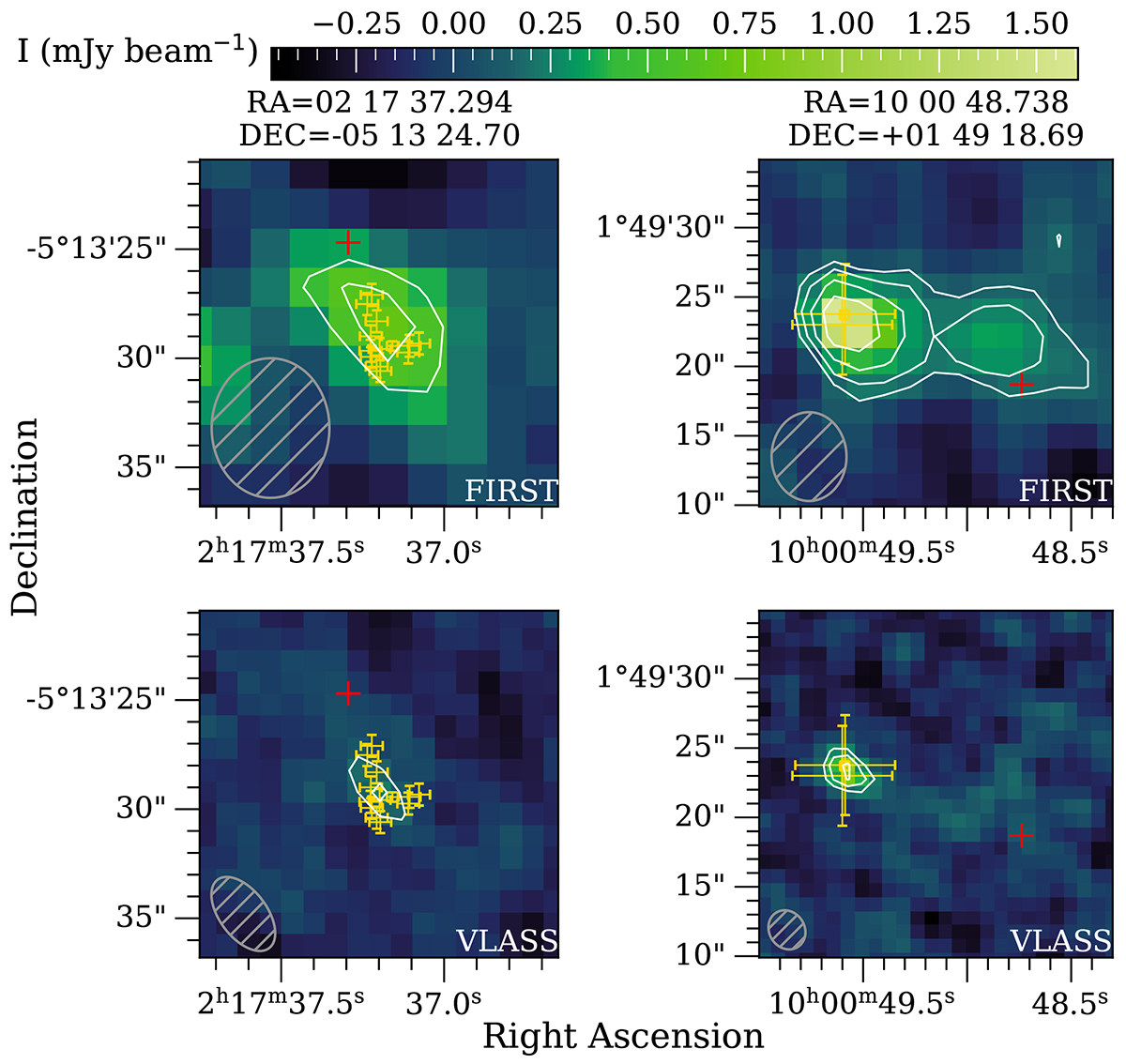Fig. A.1.

Download original image
FIRST and VLASS image cutouts around two LRDs, J0217−0513 (id. 52581, left) and J1000+0149 (id. 381494, right). The co-ordinates corresponding to the positions of the LRDs (red crosses) are shown on the top of each column. Yellow markers denote the most probable optical counterparts of the radio emission, the gravitational lensing system SL2S J02176−0513 (Tu et al. 2009) for the first, and a radio galaxy (Oklopčić et al. 2010) or a galaxy cluster (Giodini et al. 2010) for the second radio source. The first radio contours (white) are drawn at ±3σ rms noise levels (∼0.4 mJy beam−1), and the positive levels increase by a factor of ![]() . The restoring elliptical Gaussian beam sizes (half-power beam widths) are shown in the bottom left corners (
. The restoring elliptical Gaussian beam sizes (half-power beam widths) are shown in the bottom left corners (![]() at major axis position angle PA = 0° for the FIRST maps, and
at major axis position angle PA = 0° for the FIRST maps, and ![]() at PA = 37° and
at PA = 37° and ![]() at PA = 33° for the left and right VLASS images, respectively).
at PA = 33° for the left and right VLASS images, respectively).
Current usage metrics show cumulative count of Article Views (full-text article views including HTML views, PDF and ePub downloads, according to the available data) and Abstracts Views on Vision4Press platform.
Data correspond to usage on the plateform after 2015. The current usage metrics is available 48-96 hours after online publication and is updated daily on week days.
Initial download of the metrics may take a while.


